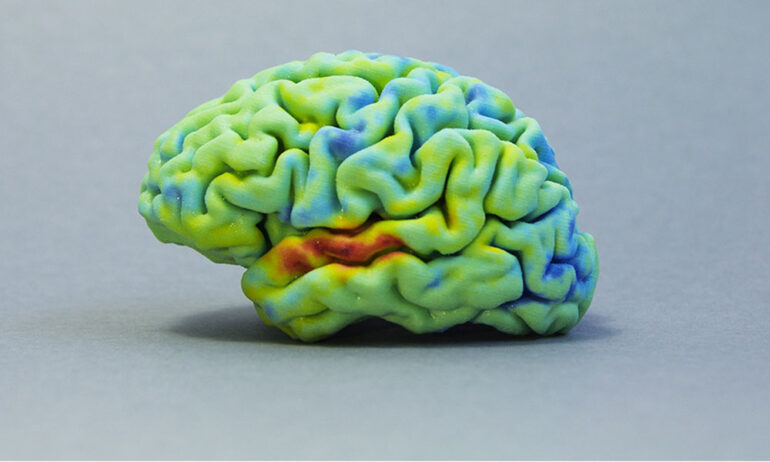For the first time, researchers have 3D printed functional human brain tissue that can actually “think” and communicate like the real thing. This breakthrough could revolutionize our understanding of the brain and how neurological disorders arise.
Instead of conventional layer-by-layer printing, the team at the University of Wisconsin-Madison pioneered a new horizontal technique using soft bio-ink gels. This allowed delicate neurons to fully interconnect just like they do in our heads.
“We printed the cerebral cortex and the striatum, and what we found was quite striking,” said senior author Su-Chun Zhang. “Even when we printed different cells from separate brain regions, they could still talk to each other in very specific ways.”
Within a few weeks, networks and signaling pathways resembling the human brain emerged. Neurons actively chatted using neurotransmitters, while supportive astrocyte cells formed connections too.
By maintaining tissue thinness, the team ensured ample oxygen and nutrients diffused to the faux brain material from surrounding fluid.
“This could be a hugely powerful model to help us understand how brain cells and regions communicate in humans,” explained Zhang. Currently, research relies on limited animal models or tiny lab-grown organoids lacking neural complexity.
The precision 3D printing process allowed exact control over cell type, shape, and arrangement – an ability absent in organoids. This paves the way to accurately studying disorders like Alzheimer’s and Parkinson’s at their source.
“It changes how we view stem cell and neuroscience research and the causes behind neurological conditions,” said Zhang.
The researchers continue improving their pseudo-cortex models. But already these engineered tissues exhibit sophisticated signaling pathways that mirror our own remarkable brains.

